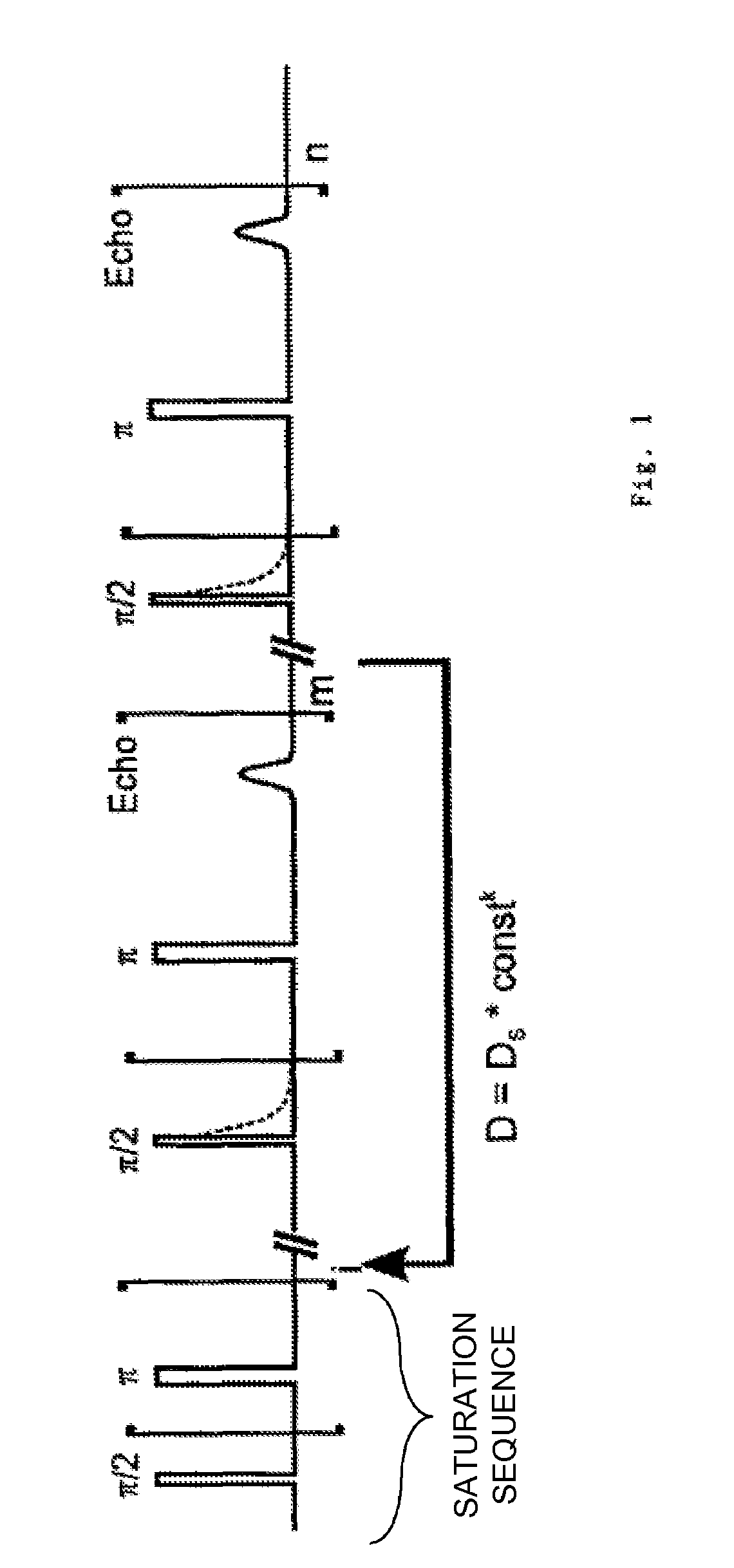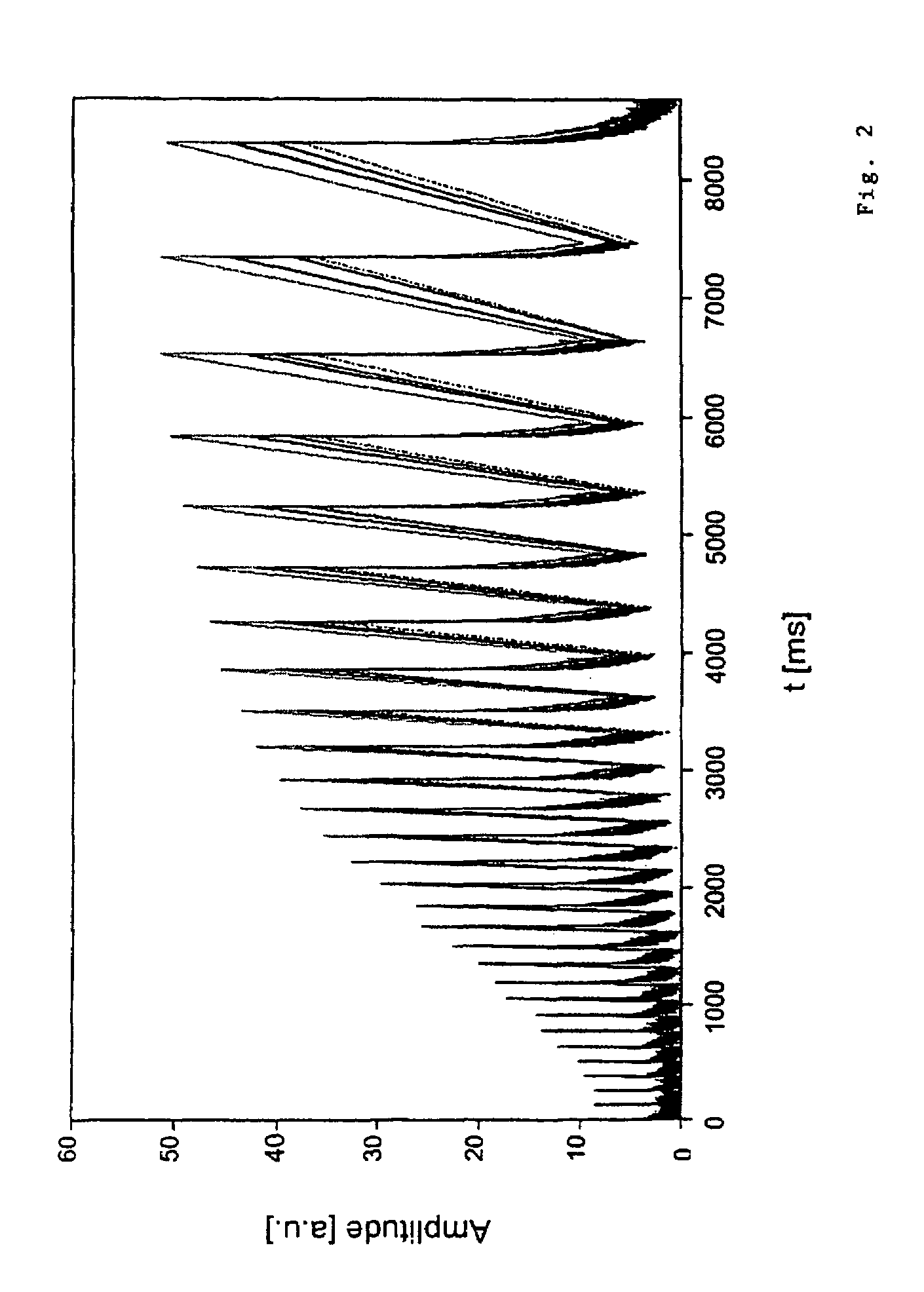Method for determining the content of at least one component of a sample by means of a nuclear magnetic resonance pulse spectrometer
a technology of nuclear magnetic resonance and pulse spectrometer, which is applied in the direction of geological measurements, analysis using nuclear magnetic resonance, reradiation, etc., can solve the problems of short comparison time between the measurement duration and the evaluation of the measurement, and achieve the effect of reliably measuring
- Summary
- Abstract
- Description
- Claims
- Application Information
AI Technical Summary
Benefits of technology
Problems solved by technology
Method used
Image
Examples
Embodiment Construction
[0030]FIG. 1 shows, schematically, a pulse sequence which is used for the method according to the invention.
[0031]One major feature of the method according to the invention is that the combination of various relaxation processes, that is to say the signal amplitudes (these are, for example, governed by the T1 and T2 relaxation), that is to say the mutual relationship between the parameters, is taken into account.
[0032]This is because it has been found that poorer measurement results are obtained when only one measurement of the longitudinal or of the transverse magnetization decay is carried out. Furthermore, it has been found that the best correlation between the measurement sample and the reference sample is obtained when the combined magnitization decays are investigated, that is to say the correlation is improved when the combined information from T1 and T2 relaxation is used. Since the relaxation times reflect both dynamic aspects of the examined molecules and static characteri...
PUM
| Property | Measurement | Unit |
|---|---|---|
| resonant frequency | aaaaa | aaaaa |
| nuclear magnetic resonance pulse spectrometer | aaaaa | aaaaa |
| static magnetic field | aaaaa | aaaaa |
Abstract
Description
Claims
Application Information
 Login to View More
Login to View More - R&D
- Intellectual Property
- Life Sciences
- Materials
- Tech Scout
- Unparalleled Data Quality
- Higher Quality Content
- 60% Fewer Hallucinations
Browse by: Latest US Patents, China's latest patents, Technical Efficacy Thesaurus, Application Domain, Technology Topic, Popular Technical Reports.
© 2025 PatSnap. All rights reserved.Legal|Privacy policy|Modern Slavery Act Transparency Statement|Sitemap|About US| Contact US: help@patsnap.com



